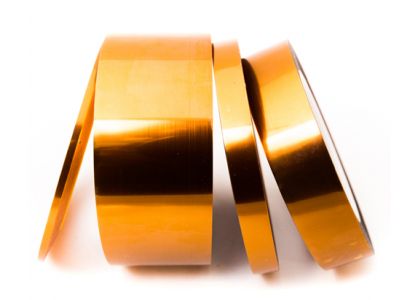
In the realm of industrial manufacturing and electronic applications, the choice of tape can significantly impact performance and durability. One highly regarded option is polyimide tape, often referred to by its brand name, Kapton tape. This specialized tape is renowned for its excellent thermal resistance, electrical insulation properties, and overall durability. However, when it comes to high humidity environments, one may wonder: is polyimide tape the right choice? In this article, we will explore the properties of polyimide tape, its performance in humid conditions, and its comparison with other tape types like high temperature silicone tape.
Polyimide tape is made from a polymer film that has been extensively used in various industries due to its remarkable properties. It is ideal for applications that require high-temperature resistance, as it can typically withstand temperatures ranging from -269°C to 400°C (-452°F to 752°F). This makes polyimide tape suitable for tasks such as:
· Electrical insulation: It is widely used in electronic devices and circuits, where excellent dielectric properties are essential.
· Masking in powder coating: Polyimide tape is effective for masking delicate components during powder coating processes.
· High-precision applications: Industries such as aerospace and automotive often utilize this tape for its reliability in demanding conditions.
Another popular variant of this tape is Kapton, a well-known brand within the polyimide family. Whether referred to as Pi tape or Kapton tape, these products are synonymous with high-quality, durable solutions tailored to withstand extreme conditions.
When evaluating the suitability of polyimide tape for high humidity environments, several factors must be considered, including moisture absorption, adhesive performance, and long-term reliability.
Polyimide itself is generally resistant to moisture; however, it is important to note that the adhesive used in polyimide tape can vary. Some adhesives may absorb moisture, which could affect the tape's overall performance and adhesion in humid conditions. Therefore, when selecting polyimide tape for a specific application, it is crucial to consult with the polyimide tape manufacturer to understand the moisture resistance of the specific adhesive formulation.
High humidity does pose challenges for many types of adhesives. In humid environments, certain adhesives may lose their effectiveness, leading to delamination or decreased adhesion strength. However, high-quality polyimide tapes designed for high humidity applications often utilize specialized adhesives that maintain their bonding strength even in damp conditions. These adhesives are formulated to resist moisture-related degradation, making polyimide tape a viable option for electronics and other applications exposed to high humidity.
Many high humidity environments also involve varying temperature conditions. Polyimide tape's exceptional temperature stability allows it to perform well in shifting conditions without succumbing to degradation. Whether exposed to elevated temperatures or chilled environments, polyimide tape maintains its integrity, which is crucial for applications in both humidity and temperature extremes.
While polyimide tape offers many advantages, it is beneficial to compare it to alternatives, such as high temperature silicone tape, in terms of their performance in humid conditions.
High Temperature Silicone Tape: This tape is known for its flexibility and temperature resistance, but it may not offer the same level of electrical insulation as polyimide tape. In humid conditions, high temperature silicone tape may perform well, but it could be less effective in applications requiring robust electrical insulation.
Polyimide Tape vs. Kapton Tape: In general usage, both polyimide and Kapton tapes are excellent for high-temperature environments, but the brand specificity may offer slight variations in adhesive quality or resistance to humidity—these variations are worth considering based on the intended application.
Polyimide tape’s properties make it suitable for various applications in high humidity environments:
Electronics Manufacturing: In the assembly of electronic devices, polyimide tape is often used to insulate and protect sensitive components from moisture exposure. Whether in PCB assembly or encapsulation processes, its reliability is crucial for maintaining product integrity.
Industrial Coating: During powder coating processes, especially in humid environments, the need for effective masking and protection becomes essential. Polyimide tape ensures clean lines and complete masking, preventing moisture from affecting the coated surfaces.
Aerospace and Automotive: These industries often face humidity issues due to environmental exposure. Polyimide tape can provide insulation in electronic systems, ensuring consistent performance under high humidity conditions.
In summary, polyimide tape, particularly its well-known variant Kapton tape, can be an excellent choice for applications in high humidity environments. Its inherent properties—high-temperature resistance, effective electrical insulation, and flexibility—make it suitable for various demanding applications. However, careful consideration of the adhesive formulation is essential, as the performance of polyimide tape in humid conditions can depend significantly on adhesive quality.
Consultation with a reputable polyimide tape manufacturer can provide insights into adhesive options specifically designed for moisture resistance, ensuring optimal performance in high humidity applications. Whether you’re dealing with electronics manufacturing, industrial coating, or other specialized tasks, polyimide tape stands out as a reliable choice, even in the most challenging environments. Thus, for those seeking robust performance in high-humidity situations, polyimide tape remains a strong contender worthy of consideration.